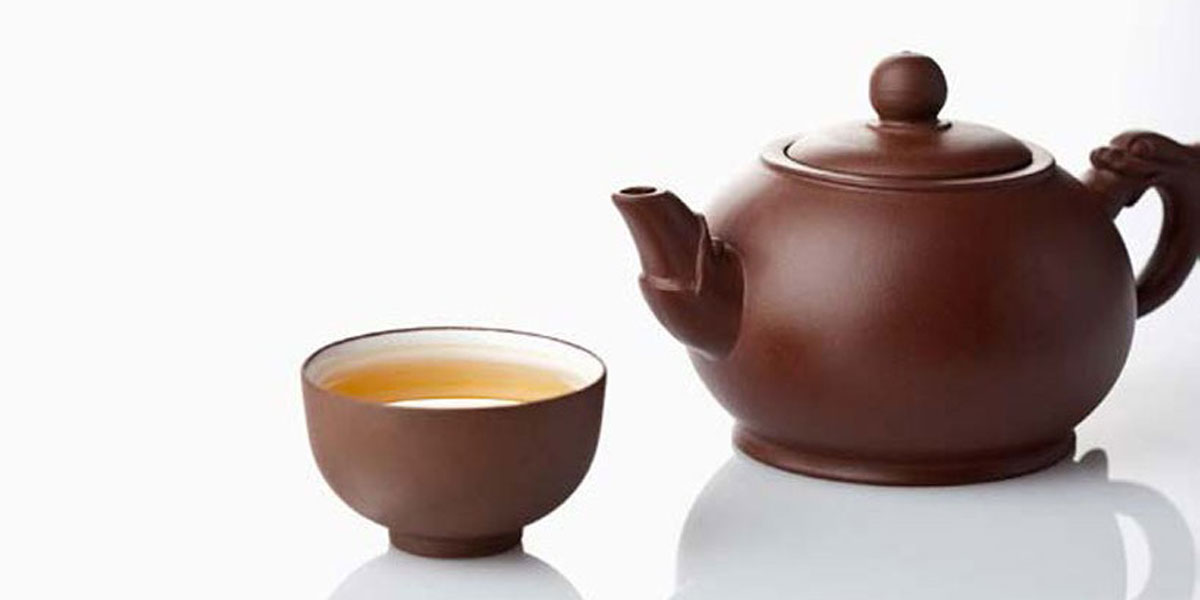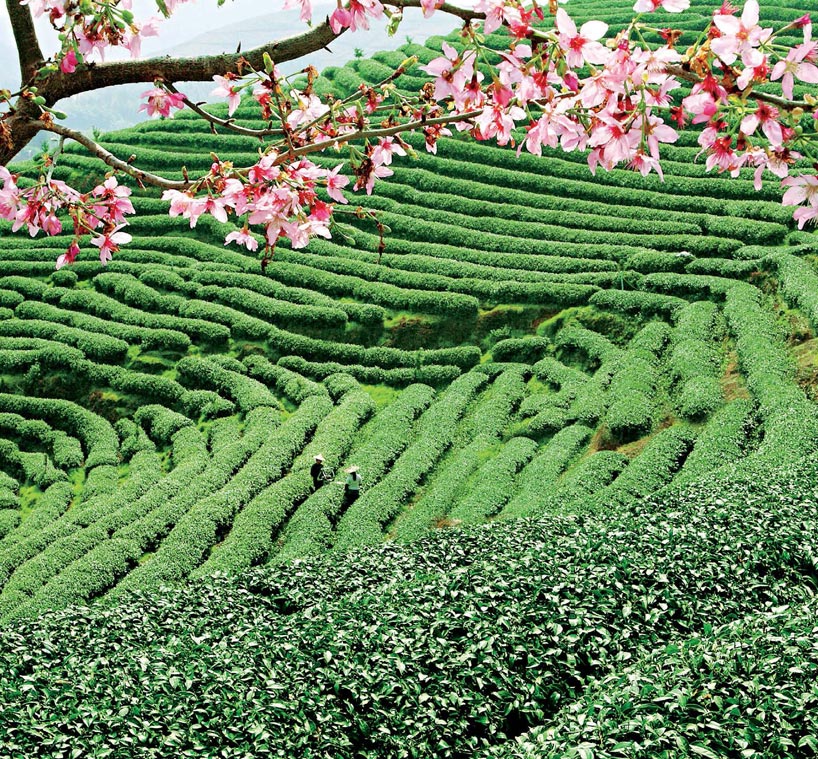

Spring is a good season for chinese tea
A tea drinking custom has been established in China, which has been persisted well for thousands of years. Today China has become the largest world tea producer and consumer with its output and consumption standing at 1.4 million tons and 1.06 million tons per year respectively.
When willows in Beijing have yet to sprout in early spring, regions south of the lower reaches of the Yangtze River have already witnessed the first tender green buds on tea bushes, which came to life just before the Tomb-sweeping Day, and were carefully plucked off and roasted to “new tea”. Now it is available in all parts of the country and bringing the breath of spring to us. As a saying goes like this, the whole year’s work depends on a good start in spring. The season of fragrant spring Chinese tea has just come.
A report released by the United Nations Food and Agriculture Organization in late March this year showed that in 2010 the tea output worldwide reached 4.1 million tons, and 4 million of which was consumed. China has become the largest tea producer and consumer with its output and consumption standing at 1.4 million tons and 1.06 million tons respectively.
The unique features of a local environment always give special characteristics to its inhabitants. China’s beautiful mountains and rivers give birth to over 350 strains of tea bushes while new strains and variations keep emerging on the horizon. The tea leaf is blessed with faint fragrance and it is said that even before 2,700 BC, some people had already discovered that tea has the effect of helping produce saliva and slake thirst, refreshing oneself and eliminating diseases. After constant improvement in processing techniques, tea has become a drink suitable for all ages. As a result, a tea drinking custom has been established in China, which has been persisted well for thousands of years.
In addition, tea is also dubbed the “national drink” of China. It serves as one of seven daily necessities, namely “fuel, rice, cooking oil, salt, sauce, vinegar and tea”; it is also part and parcel of cultural events which involve “music, chess, calligraphy, painting, poetry, liquor and tea”. Not only as a drink for people to quench thirst, wet whistle, tea is essential in parties and banquets. Besides, it is a favorite of refined scholars and a resort to Zen enlightenment. In a word, Chinese people’s life is closely connected with tea.

CHINESE TEA IN DAILY LIFE
Li who has started her job recently asked a two-day leave to attend her cousin’s wedding ceremony in her hometown. “Dad, Mom, please have some tea.” The bride in red wedding address stood in front of their parents and reverently served the tea. Li also immersed herself in happiness when looking at the smiles on the parents’ faces. Chinese people like drinking tea and serving tea to parents to show their respect and gratefulness. As marriage is one of the most important events in anyone’s life, tea is surely a must-have.
People always connect “tea” with “food”. When a guest pays a visit, the host politely says “there is no good tea and food, sorry for my shabby entertainment.” When praising a girl is good at doing housework, one always says that “she is excellent in needlework, tea-serving and cooking”. A proverb goes like this “it is better to be deprived of salt for three days, than to be starved of tea for a single day.” “A simple diet of coarse tea and plain food” refers to plain daily life and one may have “no appetite for food and tea” when he/she suffers lovesickness. Without tea, life would be dimmed. The first taste of Chinese tea is bitterness, which is mixed with fresh, sweet aftertastes. This is just like the struggling process of life and corresponds to Chinese people’s outlook on life: “after sufferings comes happiness.”

French literary giant Honoré de Balzac likes drinking strong Chinese tea. One of his best friends gave an account of his love for Chinese tea: he never grants tea to laymen and only when a person possesses some basic knowledge about tasting tea, is he eligible for such an enjoyment. At that moment, he would “take out tea from a treasured artistic box, and with great care, open the silk floss tea envelope with ideograms on it…a delicate fragrance flows in the air immediately.” Mr. Lu Xun, China’s modern literary giant and founder of new literature once said that: “it’s an ‘easy and carefree life’ if one has good tea and could enjoy drinking it. But such an ‘easy and carefree life’ calls for time initially, and a special feeling after repeated exercises.”
With advanced processing technologies which have made tea easily portable, tea bags, with which tea could be served rapidly, have become quite popular, enabling people to enjoy fragrance of a tight schedule. It’s still a necessity on people’s desk and accompanies our daily emotions – pleasure, anger, sorrow and joy.
Just as coffee shops are everywhere in the west, teahouses are Chinese people’s “coffee shops” and centers for people to seek leisure life and share information. If you type the two keywords of “Hangzhou” and “teahouse” in baidu.com, you may find over 600 teahouses, either big or small. Chengdu is also famous for its teahouses everywhere, from high-end and fashionable tea houses, to open teahouses under trees along the streets. Altogether, there are more than 3,000 teahouses of different styles and grades in Chengdu. Chinese famous writer Lao She wrote a well-known play called Teahouse to demonstrate the complexity and diversity of the society based on various people of a teahouse. The life tempo in the modern society appears ever faster where people are always in a hurry, but the tea house still serves as a favorite place for them.
A CUP OF TEA INSPIRES A POETIC MIND
A saying goes like this “there are a thousand Hamlets in a thousand people’s eyes”, and this is also the case for people’s varied understanding about tea. In a Dream of Red Mansions, there is an occasion when Miaoyu entertains Daiyu, Baochai and Baoyu to have a cup of tea. Water she uses for brewing the tea is snow-melted water which she collected from plum blossoms five years ago and the tea set for each one is provided based on their distinctive characters. As such, it is truly an ethereal and refined style.
Lu Tong, a poet in the Tang Dynasty, was addicted to tea and wrote Seven Bowls of Tea to describe the feelings and wonderful atmosphere of drinking tea which is still sung among Chinese, Japanese and people of other countries. “The first cup kisses away my thirst, and my loneliness is quelled by the second. The third gives insight worthy of ancient scrolls, and the fourth exiles my troubles. My body becomes lighter with the fifth, and the sixth sends word from immortals. But the seventh – oh the seventh cup – if I drink you, a wind will hurry my wings toward the sacred island.” For his part, drinking Chinese tea can not only wet whistle, but also lessen many worldly troubles, and clear his mind to give up fame and gain and become immortal.
Today, many young people exchange their experience of learning tea ceremony on the Internet. A netizen named “Chong’er” wrote: “in face of small tea cups and bowls with covers, it seems that drinking tea has become a game of ‘playing house”. Then I found “making tea isn’t that easy, which involves culture, history, geography and poetry… Gradually, I stepped into the world of tea.” This blog attracts many people’s attention. Some replied that “learning tea ceremony helps my heart obtain tranquility” and another said that “tasting tea is actually tasting life and I want to be the tea, absorbing bitterness and sending fragrance.”
Making and drinking Chinese tea contains the movements showing comity and harmony. For instance, after pouring tea, it’s impolite if the guest takes the tea cup by himself. It’s the host who shall hand over the tea cup to the guest with both hands and the order to serve the tea shall be based on the principle of seat of honor first, followed by seniority. The last cup is reserved for the host himself. Tea moistens people’s heart the most and can help develop lofty sentiments. It carries forward Chinese people’s philosophical thinking of conduct.
LONG-STANDING HISTORY
When did the Chinese begin drinking tea? The opinions vary when it comes to the origin of tea. Most of people believe that the record in the Shen Nong’s Herbal Classic, the earliest existing pharmaceutical book, represents the earliest origin. Back in the era of three emperors and five sovereigns (in ancient China), “Shen Nong suffered 72 poisons in one day when trying herb medicines and Chinese tea is the antidote for him.”
Sun Hao, the fourth monarch of the state of Wu in the three Kingdoms period, gave a banquet and guests drank at least seven liters of wine. But the erudite Wei Yao couldn’t drink too much. So Sun Hao served tea to him and lately, the statement of “substituting wine with tea” has become a story passed on and is still a “buzz word” at today’s banquet.
An epoch-making transformation in tea planting and drinking tradition happened in the Tang Dynasty, which is related to a man called Lu Yu. He wrote a book The Classic of Tea which comprehensively describes the distribution of tea planting areas, exquisitely studies on the techniques of making and brewing tea, exclusively designs for the production and selecting materials of tea sets, and tea drinking environments, and expands the connotations of tea. He is regarded as “tea saint” by later generations. Numerous approaches of drinking tea were invented in the following Song Dynasty and the unique custom of “tea competition” was developed to identify the strength and weakness of tea flavors and fragrances. Great literati Fan Zhongyan of the Northern Song Dynasty had a poem to record the scene, vividly showing us the historical picture.
Chinese tea culture has been developing as time goes by and there are many discussions and literary quotations about tea in each generation which, as precious tea culture, have been handed down to future generations and become a topic for us at leisure in the 21st century.
TINY CHINESE TEA LEAVES CONNECT THE WORLD
The jingling camel bells broke down the tranquility of “ancient tea route“, through which, tea planted in Yunnan and Sichuan was transported to the Tibetan area. As an ancient tea route with the highest elevation and greatest difficulty to pass through, it testifies the friendship between the Han and Tibetan people. For now, modern transportation has been developed, so ancient tea route doesn’t serve as the passage for tea trade but a famous tourist attraction.
More time-honored than the ancient tea route is the Silk Road from the northwest China to western Asia and Arab regions. Today, many places in Asia have their unique systems, schools and rites of tea ceremony, but all of them could be tracked back to China’s tea drinking custom in the Tang Dynasty which was spread to Japan and other Asian countries by envoys sent to the Tang Dynasty.
The western world took notice of China’s tea drinking custom long before. Italian Mattew Ricci described tea in a vivid and careful way. Many westerners visiting China, including missionaries, exaggerated the functions of tea so that people in Britain and even the entire Europe took tea as a new drink. It has become a luxurious drink of the upper classes in Europe. Queen Victoria liked drinking black tea and held court tea parties in the afternoon. The noblemen regarded participation in the tea party as their pride. Over time, the fashion of drinking afternoon tea has taken shape in Britain.
The clear and melodious camel bell jingles have died away, but the exchanges in tea culture among countries have become ever more frequent, trade worldwide have remained flourishing. Chinese tea has become an envoy of friendship of the oriental culture accidentally, sending fragrance amid international civilization exchanges.

LINKS
- There are many benefits in drinking tea. A large amount of tea polyphenol is contained in tea leaves which work well in resisting oxidation and prolonging the process of ageing. In addition, it will help reduce blood pressure and blood fat. Besides, it has the effect of preventing decayed teeth and cancer.
- Different types of tea should be selected in different seasons. In summer, cool-natured tea is perfect, such as green tea and white tea. Warm tea is more suitable in winter, such as black tea and oolong tea. And moderately fermented oolong tea is the best choice in spring and autumn
 Published in Confucius Institute Magazine
Published in Confucius Institute MagazineMagazine 20. Volume 3. May 2012.
View/Download the print issue in PDF


























No hay comentarios:
Publicar un comentario